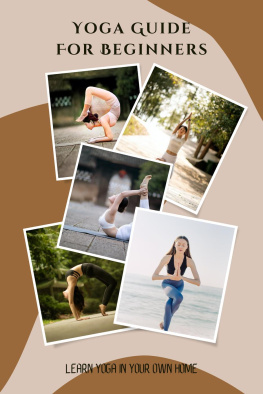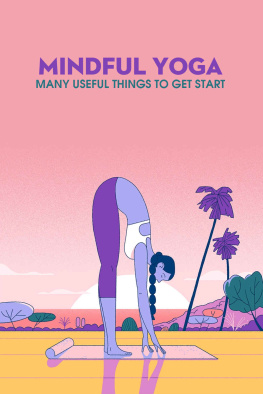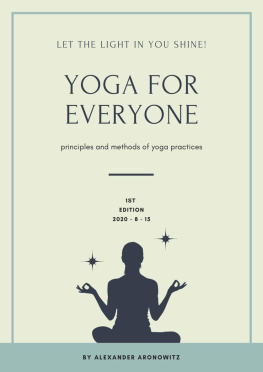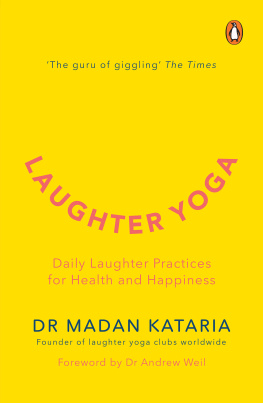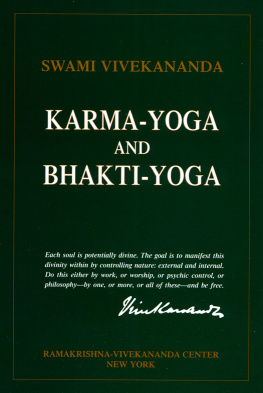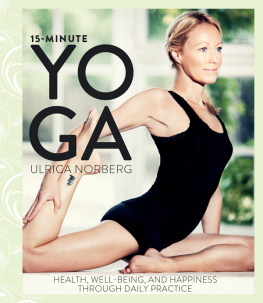JOSS GUIN
GATEWAYS TO HEALTH

KARMA
YOGA
BRINGING YOGA INTO YOUR DAILY LIFE

Contents
Introduction

Karma and Yoga
Yoga is the mother of all the Eastern methods of self-development. Its origins are lost in prehistory, but we know that in India, 5,000-year-old statues have been found showing figures in yoga poses. Buddha practised yoga, and the yoga word for meditation, dhyana, is the root of the Japanese word Zen.
The word yoga has become synonymous with the poses that give so many health benefits, but yoga actually means union. Yoga is any exercise that promotes union between your body, mind, spirit, and the world around you.
This book teaches simple yoga poses, breathing techniques and meditations that anyone can do. It also provides a gateway between yoga as an exercise and Karma Yoga which you can practise all the time.
Karma means action, so Karma Yoga is the Yoga of Action. It is a method designed for those who do not have the time or the temperament for devotion, for austerities or for philosophical study.
It was first taught about 2,500 years ago to a king who was sick of his duties in life. The kings guru said that renouncing your duties and becoming a monk is one way to find peace, but that it is better to do your duty and make what you do Yoga.
Another way of thinking of Karma is as your emotional baggage and habits; it is your actions, but it is also the result of past actions. Emotional baggage and habits stay with us because we unconsciously keep doing the same things out of the same motives. In a way we are trapped and it is this trap that causes all our stress and suffering. The only way out is to start acting consciously, and that is what Karma Yoga helps you to do.
The Benefits of Karma Yoga
Learning Karma Yoga through the medium of yoga poses is ideal because you get the benefits of the exercise, as well as the benefits of Karma Yoga in your daily life.
Yoga poses always give increased strength and flexibility. They can balance hormones, and best of all yoga helps to relieve and even prevent stress. Most people, however, find that the benefits of a yoga workout fade in a day or two.
So in this book we start with the pose or meditation, and then go on to use it as a symbol for a virtue to develop in daily life. These are not virtues for virtues sake, but are practical ways of improving your life and obtaining peace. For example, by developing courage and truthfulness in The Warrior pose (pages 1823) you can prevent being taken advantage of in life.
This focus on a virtue is also designed to make you more aware in your daily life. For example, if you are focusing on peace and you get angry, then you will be more aware. When you have that awareness you can check your motives and methods and escape your habits.
Practising Karma Yoga in your daily life can also give you a lot of energy; many people find they get a lot more done. Normally we either work on autopilot or are thinking about what we will get out of what we are doing; this stagnates or disperses our energy. But, if the virtue you are working on makes you focused and aware of only what you are doing, then your energy is likewise focused.
Finally, through Karma Yoga you can achieve unity. This happens as you become aware that the best motives go beyond you. As you slowly revise your motives they stop being about you, you are united with everything. In that state you experience the greatest happiness possible.
Ashram and Guru
Traditionally, Karma Yoga was practised in an ashram and under the guidance of a guru. Ashram means a place of hard spiritual work, like a monastery, and is usually controlled by a guru or teacher. Guru literally means the one who enlightens. The teacher would set chores and their disciples would try to do those chores without ego and in full awareness. The disciples would surrender their ego to the guru.
These ideas can be very useful in your practice of Karma Yoga. You may not have a guru or time to spend in an ashram but you can choose to view the world in a positive and helpful manner. You can treat the whole world as your ashram, a place where you have gone to uncover your nature. You can also view your life as a guru, a sometimes harsh but always loving teacher. This attitude can greatly help your practice of Yoga and your life in general.
How to Practise Karma Yoga
Yoga is a little different from other kinds of exercise. Attitude is as important as technique. Practise with an empty stomach, use the toilet and wash first so that you feel fresh and light. Try to practise at the same time each day, and whenever you practise, spend a few moments consciously setting aside your worries and plans to tune in to how your body feels. Treat each exercise as a journey you start anew each time you practise. Find your initial limits and never strain, and over time expand and explore those limits, growing in strength, flexibility and understanding.
Once you are comfortable with the movement of the pose or meditation, start to contemplate it as a symbol for its corresponding virtue while you practise. This series of yoga exercises has been chosen because they best symbolize the ten virtues that are the foundation of yoga practice. These are Peace, Truth, Honesty, Control, Freedom, Cleanliness, Contentment, Willpower, Insight and Surrender. For example, The Cleansing Breath (page 44) is great for soothing your nervous system, but in addition it is used here as a symbol for Cleanliness.
Once you are comfortable with the pattern of breathing in The Cleansing Breath, you can then consider, while practising, the corresponding virtue of Cleanliness and what needs cleaning out in your life.
Following each exercise in this book is a further practice under the heading In Daily Life. These are what help you to take the power of yoga beyond the mat. They provide a focus to help make you more conscious in everything you experience. Avoid trying more than one of these at a time, and take a relaxed but determined attitude to each.
The ten exercises can be practised independently or as a series, so you can tailor your approach to your own needs. For the best results I suggest doing the first five in the morning and the second five after your working day is done, but focus on mastering just one virtue each week.
You can take the initiative in your yoga practice, experiment and keep a record to refer back to, study books by great yoga teachers to broaden your knowledge, and best of all, go and study with great yoga teachers.


The Exercises





